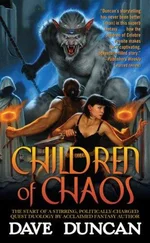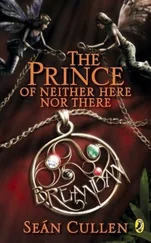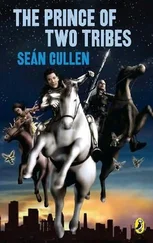Now he had to concentrate on getting Dylan a second gun. And Eric had a whole lot of production work. If only he had a little more cash, he could move the experiments along. Oh well. You could fund only so many bombs at a pizza factory. And he needed his brakes checked, and he’d just had to buy winter wiper blades, and he had a whole bunch of new CDs to pick up.
____
They also had Diversion to put behind them. Eric was a star in the program. His sterling performance earned him a rare early release—something only 5 percent of kids achieve. Kriegshauser decided to let Dylan out with him, despite Dylan’s failure to raise his D in calculus. Kriegshauser advised Dylan to be careful about his future choices. His exit report said Dylan struggled with motivation in school, but the summary was all rosy: “Prognosis: Good. Dylan is a bright young man who has a great deal of potential. If he is able to tap his potential and become self-motivated he should do well in life…. Recommendations: Successful Termination. Dylan has earned the right for an early termination. He needs to strive to self-motivate himself so he can remain on a positive path. He is intelligent enough to make any dream a reality, but he needs to understand hard work is part of it.”
Dylan responded with a bleak “Existences” entry. This was the meeting that drove him back to the journal. He wrote the same day, but failed to mention the good news. He insisted life was getting worse. In one sense it was. Release from Diversion was a painful sign. Dylan had not planned on leaving the program alive.
Eric earned a glowing report, start to finish: “Prognosis: Good. Eric is a very bright young man who is likely to succeed in life. He is intelligent enough to achieve lofty goals as long as he stays on task and remains motivated…. Recommendations: Successful Termination. Eric should seek out more education at higher levels. He impressed me as being very articulate and intelligent. These are skills that he should grow and use as frequently as possible.”
____
Both boys arrived at murder gradually, but one event pushed each of them over the hump. Eric’s occurred January 30, 1998, when Deputy Walsh shackled his wrists. From that night on, the boy was set on murder. Dylan’s turn came a full year later and was more gradual, but the turning point seems clear. It was February 1999. They had agreed on April a year in advance, and it was almost here. Eric was serious. He was really going through with it. Dylan was conflicted, as always, still leaning against, heavily against. Dylan wanted to be a good boy. He had three choices: give in, back out, or perform a hasty suicide.
Those three choices had been hanging there for a year or more. He could not decide.
Then Dylan wrote a short story. It revolved around an angry man in black methodically gunning down a dozen “preps.” The man did it for vengeance and amusement, and to demonstrate he could.
Dylan lifted most of the details right out of the NBK plan. He armed and outfitted his killer the way they planned to dress themselves. The story included a duffel bag, the diversion bombs, and reconnoitering the victims’ habits. The smallest details match. The killer is a blend. His height matches Dylan’s, but he behaves exactly like Eric: callous and methodical, viciously angry yet detached.
It was easy to imagine how Eric would react to pulling the trigger on April 20, but Dylan seemed baffled about his own response. He set Eric in motion on paper, with himself as narrator to observe. How would murder feel?
It felt wonderful. “If I could face an emotion of god, it would have looked like the man,” he wrote. “I not only saw in his face, but also felt eminating from him power, complacence, closure, and godliness. The man smiled, and in that instant, thru no endeavor of my own, I understood his actions.”
The story ended there: not with the murders but with the impact on the man behind them.
Nobody observed Dylan typing the story, but he appears to have spilled it all onto the screen in one great rush. He didn’t stop to spell-check or fix errors or hit Return. It’s all run together in a single paragraph that would have filled five pages in a normal font.
Dylan turned the story in as a creative writing assignment on February 7. His instructor, Judy Kelly, read it and shuddered. It was an astounding piece of writing for a seventeen-year-old, but she was deeply disturbed. Dylan wasn’t the first kid to write a violent story—Eric had been writing combat scenes about heroic Marines all semester. Eric was obsessed with warfare; he mimed machine-gun fire in class all the time. But war stories were different; Dylan’s protagonist was killing civilians, ruthlessly, and enjoying it. Kelly wrote a note at the bottom instructing Dylan to come see her. She wanted to talk to him before assigning a grade. “You are an excellent writer and storyteller, but I have some problems with this one,” she wrote.
Dylan came to see her. The story was grossly violent and offensive, she said—unacceptable.
Submitting the story was probably an intentional leak. Dylan chickened out. “It’s just a story,” he said. This was creative writing class. He had been creative.
Creative was fine, Kelly said, but where was all this cruelty coming from? Just reading the thing was unnerving.
Dylan maintained it was just a story.
Kelly didn’t buy it. She called Tom and Sue Klebold and discussed it with them at length. They did not seem too worried, she told police later. They made a comment about how understanding kids could be a real challenge.
Even after the murders, one of Dylan’s classmates agreed. “It’s a creative-writing class,” she told the Rocky Mountain News . “You write about what you want. Shakespeare wrote all about death.” The girl was not a friend of the killers’.
But Kelly knew she had picked up on something different. She had seen boys captivated by violence. She had read innumerable accounts of murder. She had never been confronted with a story this sadistic. It was not just a question of the events in the story but the attitude of the author conveying them. Dylan had a gift for bringing a scene to life: he conveyed action, thought, and feeling. A creepy, merciless feeling. Kelly described the story as “literary and ghastly—the most vicious story I ever read.”
Kelly brought it to Dylan’s school counselor, Brad Butts. He talked to Dylan, who downplayed it again. Good enough.
Kelly had done the right thing: she’d contacted the three people most likely to have other information about Dylan: his guidance counselor and his parents. If the counselor or parents knew Dylan had been setting off pipe bombs and showing them around at Blackjack Pizza, they could have connected fantasy with reality and NBK might have come to an end. They did not. Jeffco investigators had most of the pieces. Most of the adults close to the killers were in the dark.
____
In his journal, Dylan returned to his love obsession. He wanted to get to godliness, but he had been seeking for two horrible years now and none of his dreams had come true. Eric offered hope. Eric offered the very feelings Dylan was searching for. Eric offered reality, of all things.
Maybe seeking was a sham.
Dylan wasn’t quite ready to embrace murder. He would fight it almost until the end. But from here on, he was close.
He would take the short story with him on April 20. It was found in Dylan’s car, alongside the failed explosives, to be torn to bits in his final act. The car was slated for destruction, so Dylan didn’t bring the story for our benefit. Perhaps he needed a little courage that day. Perhaps he wanted to read it one last time.
Читать дальше







